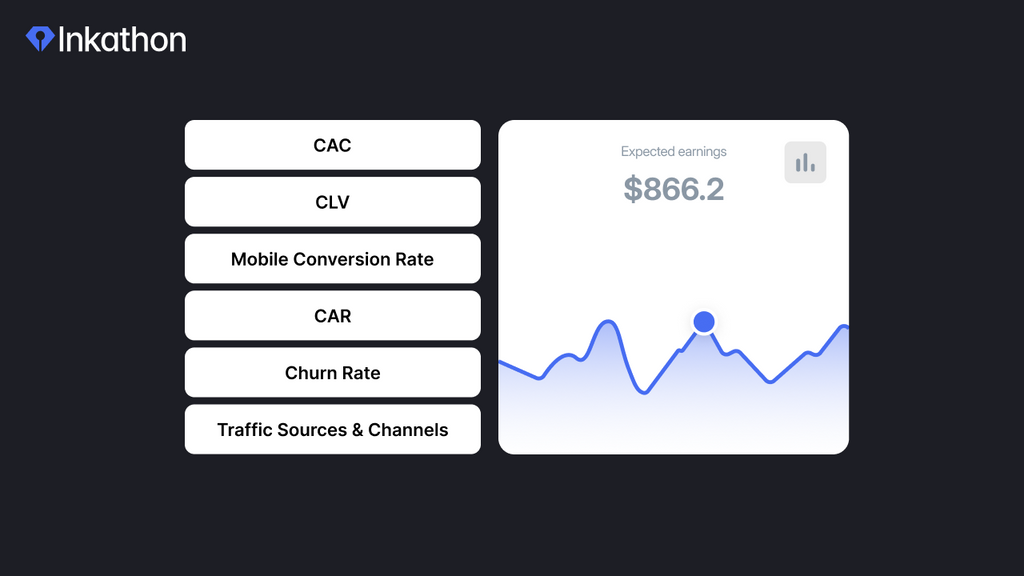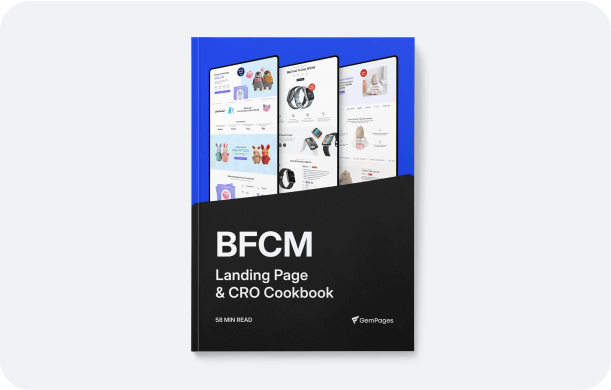Beyond Conversion Rate: 7 Essential Metrics for Comprehensive eCommerce Success Measurement

In the world of eCommerce, success measurement goes beyond just tracking conversion rates. While conversion rates are an important benchmark, they only offer a partial view of your store's overall health. A truly effective eCommerce strategy requires deeper insight through a broader range of metrics. By focusing on eCommerce metrics measurement beyond conversion rates, businesses can gain a more complete understanding of customer behavior, operational efficiency, and long-term growth potential.
This article highlights seven essential metrics that provide a more holistic view of your eCommerce performance and guide you toward sustainable success.
How to determine which ecommerce metrics matter for your business
Tracking dozens of metrics may seem like a smart strategy, but without meaningful impact on your eCommerce store’s success, many of them provide little to no value. Understanding which eCommerce metrics truly matter is essential for improving business outcomes.
Here’s our recommendation: from the large pool of key metrics you’re currently monitoring, identify the key performance metrics or KPIs that consistently drive results and align with your strategic goals. To clarify the difference, metrics track general performance, while eCommerce KPIs specifically show how effective your business is at achieving crucial objectives.
For example, one widely tracked metric by digital retailers could be total traffic generated from paid search. However, a more insightful KPI would focus on how many qualified leads or potential buyers come from that traffic. This distinction helps eCommerce businesses prioritize the metrics that influence long-term success.
If you’re struggling to determine the most important metrics for your eCommerce store, consider these three guiding questions:
-
If this metric changes, how significant is the impact on my bottom line?
Metrics that don’t directly affect profitability or core goals may not deserve your attention. -
Will improving this metric contribute to our strategic business goals?
Improvement without a strategic purpose adds little value. Focus on metrics that directly support company-wide or departmental objectives. -
Does this metric influence other key metrics?
Many metrics in eCommerce are interconnected. Improving one can trigger a positive domino effect. For example, increasing engagement on key traffic channels can boost the overall quality of traffic, which may improve conversion rates and revenue.
The business metrics presented in this article are those that successful eCommerce managers emphasize for comprehensive eCommerce metrics measurement. These aren’t just fleeting trends—they’re the foundational metrics you can confidently track to guide important decisions in your organization.
Start with these key metrics, track their performance diligently, and expand your list only when you have clear evidence that additional data points will drive better results.
The Seven Ecommerce Metrics You Can’t Skip (+ A Bonus)
In the competitive landscape of online retail, merely tracking conversion rates is no longer enough. To achieve eCommerce success, businesses must delve deeper into sales funnel metrics, eCommerce success metrics, and funnel performance indicators. Below are seven critical metrics, along with actionable insights to improve your store’s long-term profitability.
1. Customer Acquisition Cost (CAC)

Conversion rates alone fail to capture the bigger picture of profitability. Customer Acquisition Cost (CAC) bridges the gap, allowing you to understand how efficiently you acquire new customers. Calculated by dividing your total marketing expenses by the number of acquired customers, CAC provides insight into the cost-effectiveness of your acquisition strategies. A low CAC implies efficient resource allocation, ensuring your revenue outweighs customer acquisition costs.
Reference: According to a study by McKinsey & Company, businesses that track and optimize their CAC can improve their profitability by up to 25%.
2. Customer Lifetime Value (CLV)

While conversion rates emphasize immediate transactions, Customer Lifetime Value (CLV) focuses on the long-term relationship with customers. CLV represents the total revenue a customer generates throughout their engagement with your brand. Tracking CLV helps understand each customer segment's value, enabling better strategic decisions to nurture long-term customer relationships and maximize revenue over time.
Reference: A research article published in the Journal of Marketing found that increasing customer retention rates by 5% can increase profits by 25% to 95%.
3. Cart Abandonment Rate

The journey from cart to checkout is a critical juncture in the sales funnel. The cart abandonment rate highlights the percentage of users who abandon their shopping carts without completing the purchase. Monitoring this metric unveils potential friction points in your checkout process, allowing you to identify and address barriers that hinder customers from finalizing transactions.
Reference: Baymard Institute's research reveals that the average documented online shopping cart abandonment rate is approximately 69.57%.

4. Average Order Value (AOV)

Conversion rates alone don't provide insights into the value of transactions. Average Order Value (AOV) steps in by calculating the average amount spent per order. Increasing AOV through strategic upselling and cross-selling can significantly boost revenue even without a significant increase in conversion rates.
Reference: Adobe's Digital Economy Index indicates that retailers can generate up to 10% more revenue by increasing their AOV.
5. Churn Rate

The loss of customers is an inevitable aspect of any business. The churn rate measures the percentage of customers who stop engaging with your brand over a specific period. A high churn rate could signal issues with customer satisfaction, product quality, or customer support. By monitoring the churn rate, you can proactively address concerns and implement strategies to retain customers.
Reference: Harvard Business Review's research suggests that reducing the churn rate by 5% can increase profits by 25% to 125%.
6. Traffic Sources and Channels
 Source: Optimize Smart
Source: Optimize Smart
Understanding where your website traffic originates from is essential for fine-tuning marketing strategies. Tracking the sources and channels driving visitors to your site helps identify which platforms yield the highest quality traffic and conversions. This information enables more efficient allocation of resources, optimizing your marketing efforts and improving overall ROI.
Reference: Google Analytics is a widely used tool for tracking website traffic sources and channels, providing insights that guide data-driven decision-making.
7. Mobile Conversion Rate

In the mobile-driven era, a significant portion of eCommerce transactions occur on mobile devices. Monitoring mobile conversion rates ensures your website is optimized for mobile users, providing a seamless and user-friendly experience across devices. Neglecting mobile optimization could lead to lost sales and dissatisfied customers.
Reference: Statista's data indicates that mobile eCommerce sales accounted for 53.9% of total eCommerce sales in 2021.
Bonus Metric: A/B Testing Metrics
Optimizing your eCommerce store requires continuous experimentation. A/B testing metrics track the performance of different versions of your pages, helping you identify what resonates best with your audience.
Why it matters: Data-driven decisions based on A/B tests help improve key metrics like conversion rate, AOV, and cart abandonment. Regularly testing different elements of your site ensures continuous improvement.
Pro tip: Try GemX to streamline your landing page optimization process. This cutting-edge Shopify app, designed for Conversion Rate Optimization (CRO) and A/B testing, allows you to effortlessly create and test multiple landing pages for the same product.

Final thought
Tracking conversion rates is important, but it only tells part of the story. To truly measure eCommerce success, you need to look at other key metrics like Customer Acquisition Cost (CAC), Customer Lifetime Value (CLV), Average Order Value (AOV), and Churn Rate. These metrics help you understand not just how many people buy, but how valuable they are over time and how efficient your business really is.
By focusing on these essential metrics, you can make smarter decisions, improve your customer experience, and drive long-term growth. Remember, success isn’t just about getting more sales—it’s about creating a sustainable, profitable business.
Start by tracking a few key metrics, learn from the data, and adjust your strategies. Over time, this approach will give you a clear and complete picture of your eCommerce store’s performance. Go beyond conversion rates, and you’ll set your store up for lasting success.___________________
About Inkathon
This article belongs to the Inkathon, an illuminating series focused on eCommerce. This series offers a comprehensive repository of expert knowledge, informative case studies, and practical use cases that help you gain valuable eCommerce insights.



 Facebook Community
Facebook Community Change Log
Change Log Help Center
Help Center









